Bringing Care to the Community: Impart speaks about building connection and empowering youth
Tuesday May 31,2022
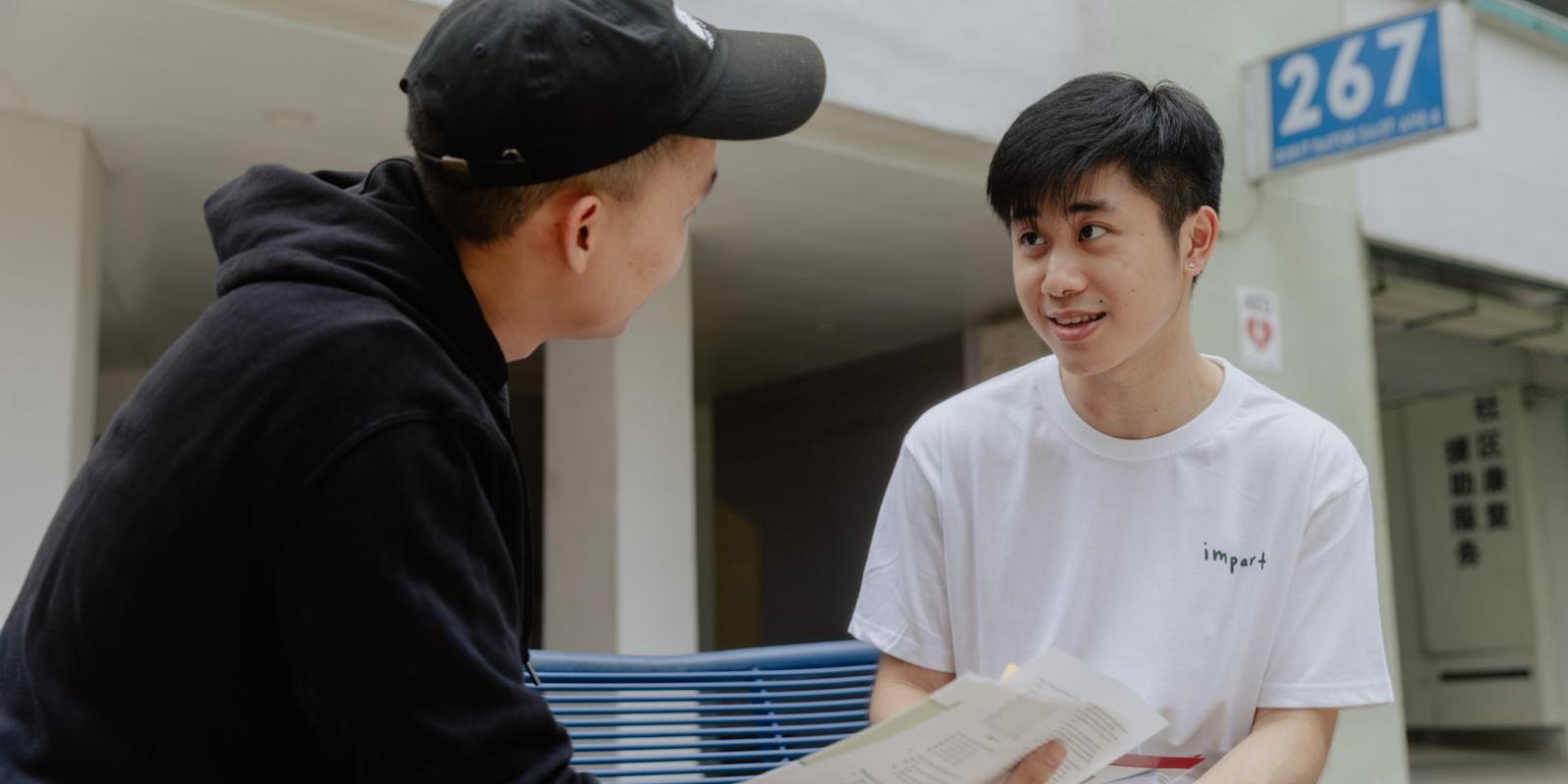
Meet Impart, a non-profit that empowers youth. We speak to Narash and Nicole, co-founder and head of Impart’s Mental Health Care arm respectively, about what drives this organisation’s passion for active engagement on the ground, the importance of fostering real relationships, and community models of care.
Impart’s co-founders Joshua and Narash first met at work in a Singaporean youth rehabilitative institution. Things were running well—juvenile offenders from some of the worst backgrounds were receiving requisite resources and relationships to get back on track with life. But the more time the two spent watching youths filter in and out of institutions, the more they realised that there was a greater need to develop community resources.
Youths-facing-adversity need more than strong institutions to get their developmental journey back on track. They needed support that was accessible from their doorsteps where they spent most of their days. But most community-based groups did not know how to engage such youths from high need and risk backgrounds. Impart was thus started with this simple desire: Enabling youths-facing-adversity to receive developmental support in their community spaces.
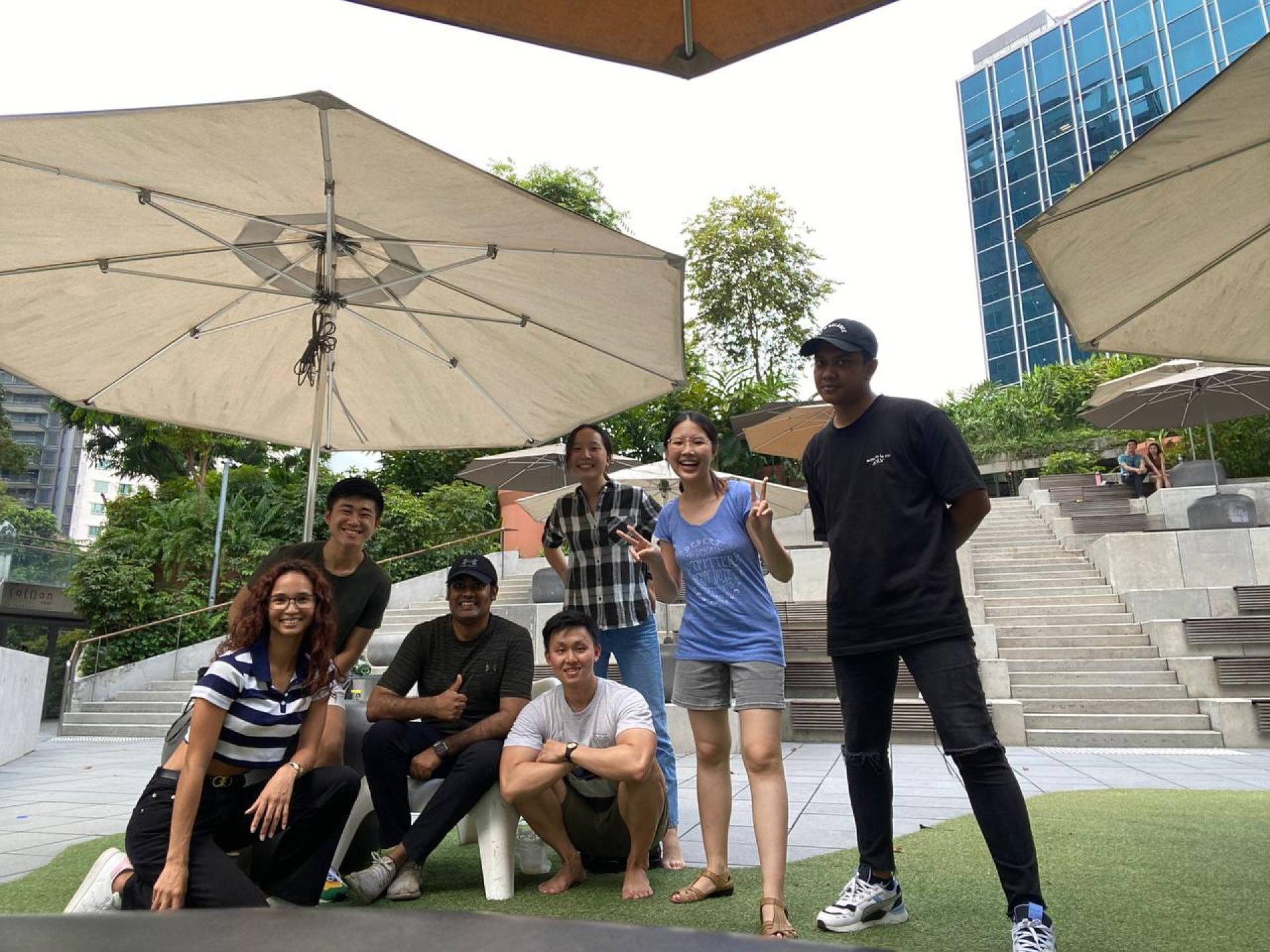 The Impart team.
The Impart team.
As an organisation that relies a lot on volunteers, what do you think is most important for you to be able to manage volunteers in a sustainable manner?
Three things come to mind:
First, volunteers had to be given an avenue to support other volunteers. We piloted this with our Community Care Fellows (CCF) program last year, where 20 volunteers stepped up to be trained with peer support skills. This created access to mental health care for our own volunteers. As an organisation with mental health care services, we knew that it was imperative for our organisational culture to include mental health care practices. Someone has to care for the carers, and the CCF program continues on as a means to that end. We’ve also decided to build on this pilot with more tools for support by offering every volunteer a complimentary Headspace account.
Second, volunteers also had to know that the organisation was invested in their growth. This meant that we continually tune and finetune our volunteer training sessions and processes for on-the-job training. We don’t settle with the status quo on this front, and we’re always trying to consider what skills and experiences we can lend to our volunteers so that they see how they are growing through their service. One bright spot of our previous training cycle involved bringing in former youths to serve as training facilitators in a role-playing session. Little moments of engagement like this can add up to larger narratives of development.
Impart youths and volunteers gathered at an experiential learning event.
Finally, we had to make sure that our program and service design actually fosters deep impact. When we tell our volunteers that they are here to support youths facing significant adversity through their growth and development, we have to make sure they can see or know how their efforts translate into impact. It’s not enough for a youth who had dropped out of school for 2 years to experience a ‘befriending service’ or obtain generic ‘life skills’. Our program design has to ensure that such a youth can actually attain his next educational qualification. It’s not enough for a youth engaging in self harming behaviour to gain more mental health awareness. Our service design has to ensure that such a youth actually experiences a felt reduction in such behaviour and increase in mental wellness. So by constantly improving our program and service design, we help our volunteers' efforts go beyond surface impact to engender deeper change. That’s what they’re here for, and that keeps them connected with us.
Could you let us know more about your community model of mental health service and how it came about?
“If you want expert services, then pay premium rates. Otherwise, you can settle for a 3-6 month wait at a public institution.” That’s the current logic of the mental health care service delivery in Singapore. We saw this when we tried to refer an 11-year-old girl to a mental health care institution in 2020. This girl was depressed, suicidal, and averse to receiving support. But we managed to build a relationship with her, and she trusted us enough to step forward and seek help. To our horror, we were then told that the waiting time would be at least 3 months for therapy services!
It’s little wonder that the mental health care sector is so stressed out in Singapore. The average wait time at the same institution today has doubled to 6-8 months. Access to care should not be locked behind a paywall, or the sole responsibility of formal institutions. We believe that mental health care can and should begin with therapeutic relationships in our everyday communities. Doing so will also empower communities to complement our formal institutions. And that’s why we started exploring our community model of care.
Common Ground Floorball is an outreach initiative by Impart Community that brings youth residents of rental flats together over a game of floorball.
Our community model involves (a) imparting mental health care skills (largely in alignment with the Dialectical Behavioural Therapy and FutureSelves framework, if you’re keen on the technical bits) through the (b) therapeutic relationships that our trained volunteers establish with youths facing psychological adversity. And they do so through an (c) outreach and engagement model. We focus on skills because mental health is more than just conversations on a therapist’s sofa. We can’t replace therapists and counsellors anyway. We’re here to equip youths with requisite skills to start taking agency in their own mental health care, so that they are better prepared for professional services when the time comes. And we are better able to build therapeutic relationships because there’s just something special about people going out to seek you when you are down, especially when your motivation to help yourself is at your lowest. Some might not even know that they have a mental health challenge! That’s why we operate on an outreach and engagement model. Care, in these cases, is oftentimes best served at the doorstep.
When was the first time you realised you were making a difference?
Nicole: The first time I truly realised that we were making an impact in the community was actually more than a year after we started journeying with youths. I met my first ever youth in October 2019 and journeyed with her over a period of 6 months. She was 11 then, and after the programme closure, I had followed up once in a while to congratulate her for major milestones, and check in every now and then. When she turned 13, she started experiencing overwhelming levels of anxiety as she transitioned into secondary school, having to adapt to a new environment and new people. When I probed further on how she was coping and managing anxiety, she shared that she had started bringing the small yellow booklet that we used to write all our notes down during the programme in 2019, and she was using the skills inside to cope. This made me realise that the work we were doing is different and sustainable because it teaches skills that stay with our youths long after our intervention ends.
Narash: I always envisioned Impart to be a place where former youths facing adversity can return to lend their talents. After 4 years, I saw this come true with Narish’s return. He was the very first youth who received our services in 2017, and his journey has been pretty remarkable! He completed his traineeship with Subaru at ITE, developed his craft as an amateur boxer, and explored a future in Sports Science & Management. After probing his potential in these different regards, I was elated when he told me he wanted to return to Impart as a Mental Health Care intern. This is actually a proud moment for me. I’ve known Narish for more than 5 years, and he has really had quite the exceptional journey. So it means a lot to see him using his skills and lived experiences to relate to other youths, and even train our own volunteers. He recently obtained his para-counselling qualification, and it has been quite a journey of growth. It is very powerful to see a life that has received help, becoming a life that is empowered to help others. It also feels like Impart has reached the next milestone. We’re actually seeing that youths who have been impacted can now impact other youths. My hope is that Narish will be a trailblazer who helps more of our youths rise up in their own way to impart their knowledge, skills, and change to other youths.
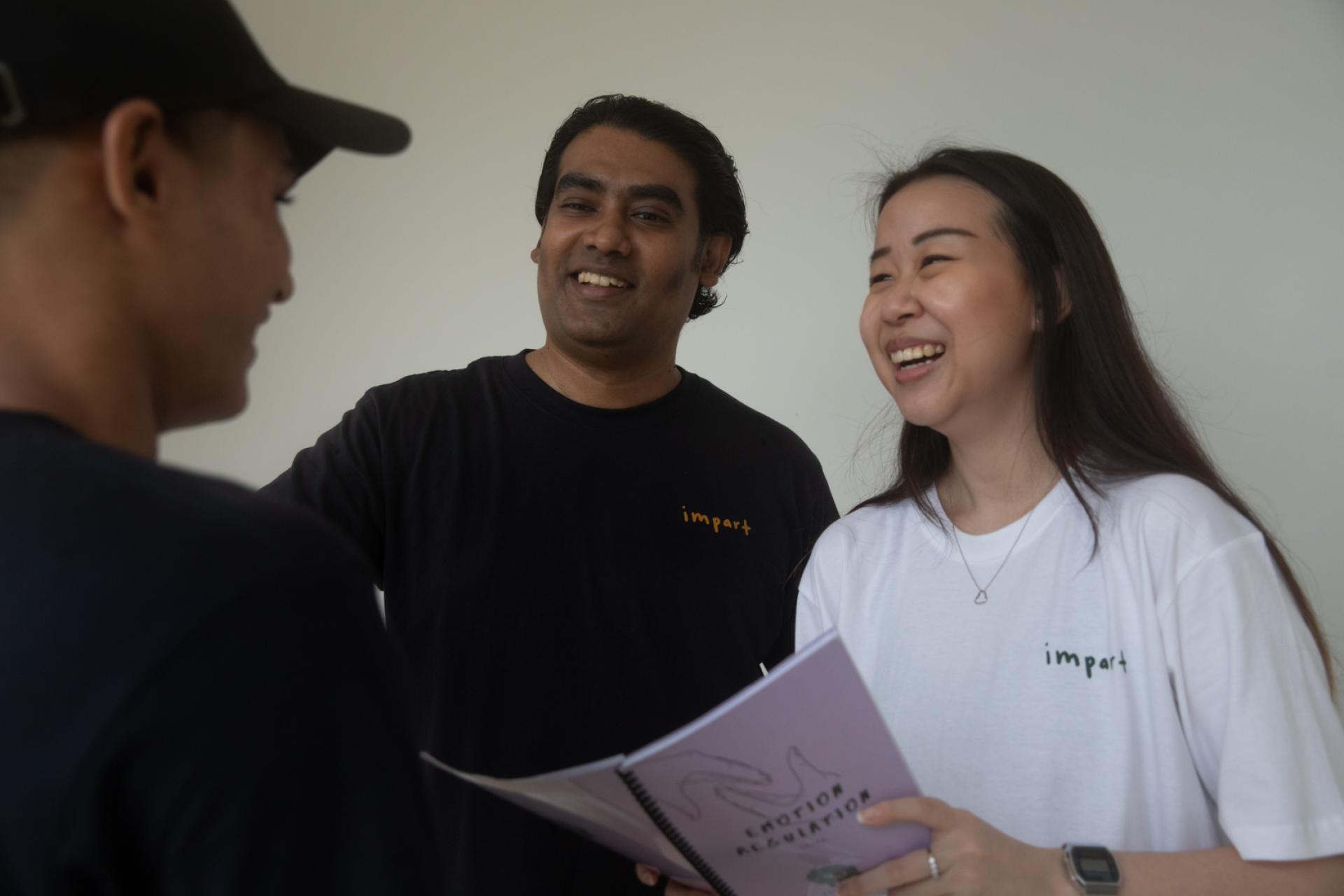 Nicole (right) and Narash (middle) going through a Mental Health Care booklet with a youth.
Nicole (right) and Narash (middle) going through a Mental Health Care booklet with a youth.
What are some of the challenges you have faced as an organisation working in this sector?
Nicole: I’d say one of the biggest ones would be helping others (i.e., stakeholders, parents, youths, volunteers) understand the heart of our work and the necessity of our different approach. We don’t fit neatly into the current moulds of ‘social workers, psychologists, befrienders etc.’ So we have to work at helping people to understand how we are different, and how that effects different kinds of change.
In addition, one of our major goals at Impart’s Mental Health Care arm has always been to decommodify mental health services and increase accessibility—especially with the population amongst the children and youth who may not typically have access to mental health services. This includes minors who are not in touch with their families and are unable to be taken up under any services due to lack of parental availability. When journeying with young people who have come from very complex backgrounds, there often seem to be a lot of protocols (albeit there to protect both workers and clients) that may sometimes also become barriers to these young people who need the mental health support.
Narash: Firstly, it has not been easy to identify volunteers with a good fit for working with youth facing psychological adversities. It takes more than passion for mental health to do the mental health work. It takes a deep introspection of their own mental health and childhood developmental journey before one can commit their time serving these youths.
Secondly, we had to work with our own volunteers on their mental health struggles while they were serving the youths. Hence, we are continuously learning how we can improve our engagement of the volunteers to help them. We invest in clinical supervision and now we are expanding the pool to involve more clinical supervisors who check on the work of the volunteers to do and provide impromptu supervision too. Of late, we have been referring them to pro-bono therapists to see them for a minimum of 5 sessions as we want to normalise the kind of mental support they receive.
Thirdly, we view volunteers as community partners and it was difficult maintaining an online community through the pandemic. Hence fostering a face-to-face community is paramount in sustaining deep connection with them, the pulse of the volunteers’ motivation and nurturing the community spirit.
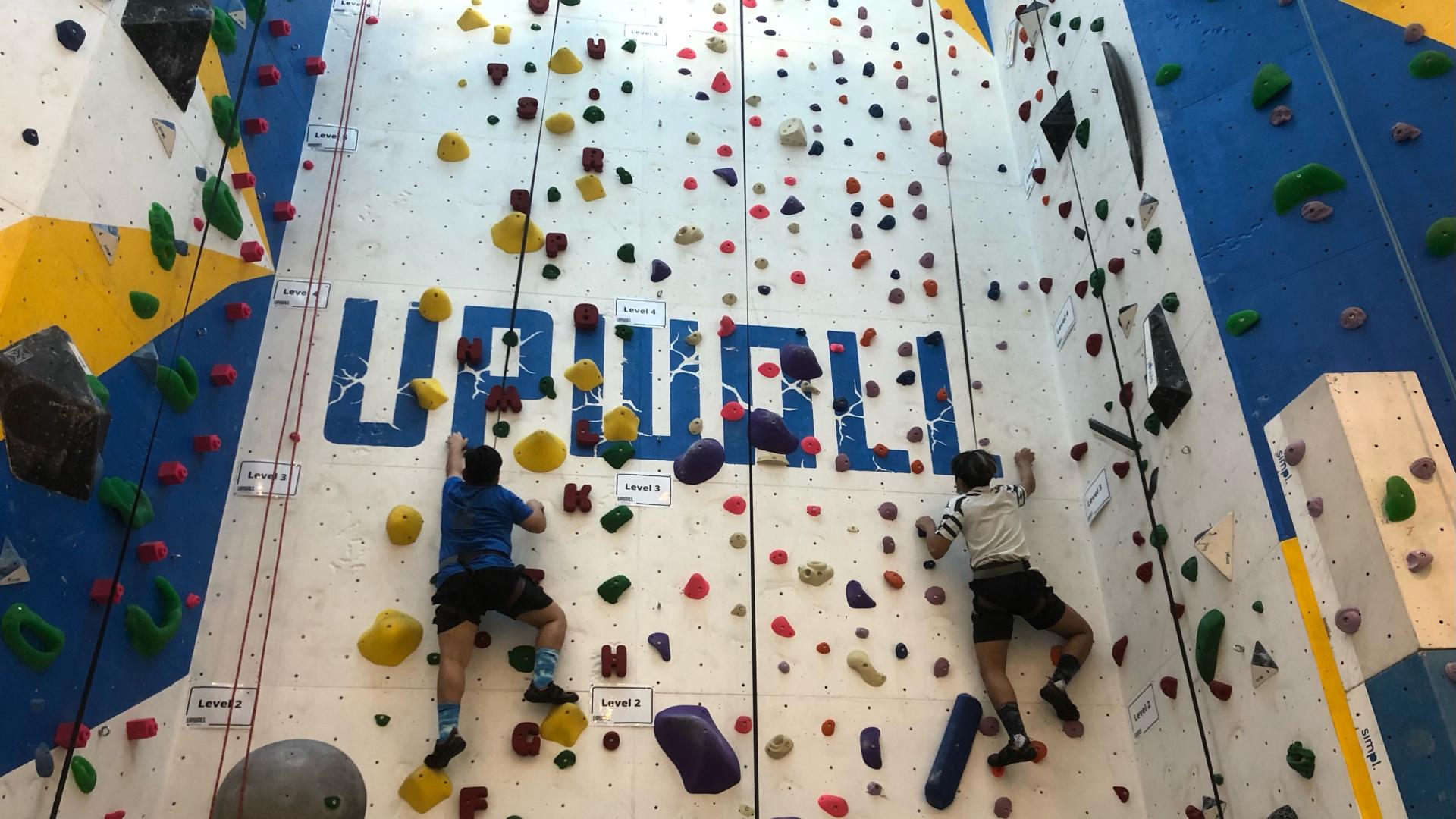
An Impart Community rock climbing program in action.
What keeps you going through difficulties and setbacks?
Nicole: As we journey with more youths in the community, and consistently upgrade ourselves with new knowledge and research, I think one of the biggest ways we overcome “difficulties and setbacks” is to reframe the way we look at these challenges. We do this in 3 ways.
First, many people may expect and desire for change that is both quick and lasting. However, it is hardly reasonable for us to expect young people to change in an instant when their behaviours are manifestations of everything they have experienced across years since their childhood. Quick change can be sadly superficial. Neuroscience informs us that more exposure is needed to create deeper neural connections. Knowing and recognising that our youths have grown, even when they have taken a step back or lapse for a moment, has kept us motivated both as individuals and as an organisation.
Another important thing that we always keep in mind is the locus of control. Being able to identify what is within and what is out of our control helps us to sharpen our focus and helps us go into problem-solving more quickly so that we are able to manage the difficulties and setbacks in a helpful and accurate manner.
Lastly, we practise community-care. We often share that we cannot serve others from an empty cup. This means that we need to be able to know how to care for ourselves and know how to recover and stay resilient before we care for others. This means proactive upstream measures to support the crew, pre-empting issues of burnout more effectively; broad-based in serving volunteers’ journey by equipping them to care for themselves better; and integrating care by weaving together social and self care support to enable an ecosystem of care.
Is there anything special that you like to do for fun as a team?
Weekly staff lunches and bonding activities have been a joy! We treat it as a time to unwind and joke around with each other. We’ve also recently moved into a co-working space shared with The Majurity Trust, and they have a table tennis table. If you get to know us better, you’ll see that the competitive spirit in many team members has started to show itself through the humble ping pong paddle.
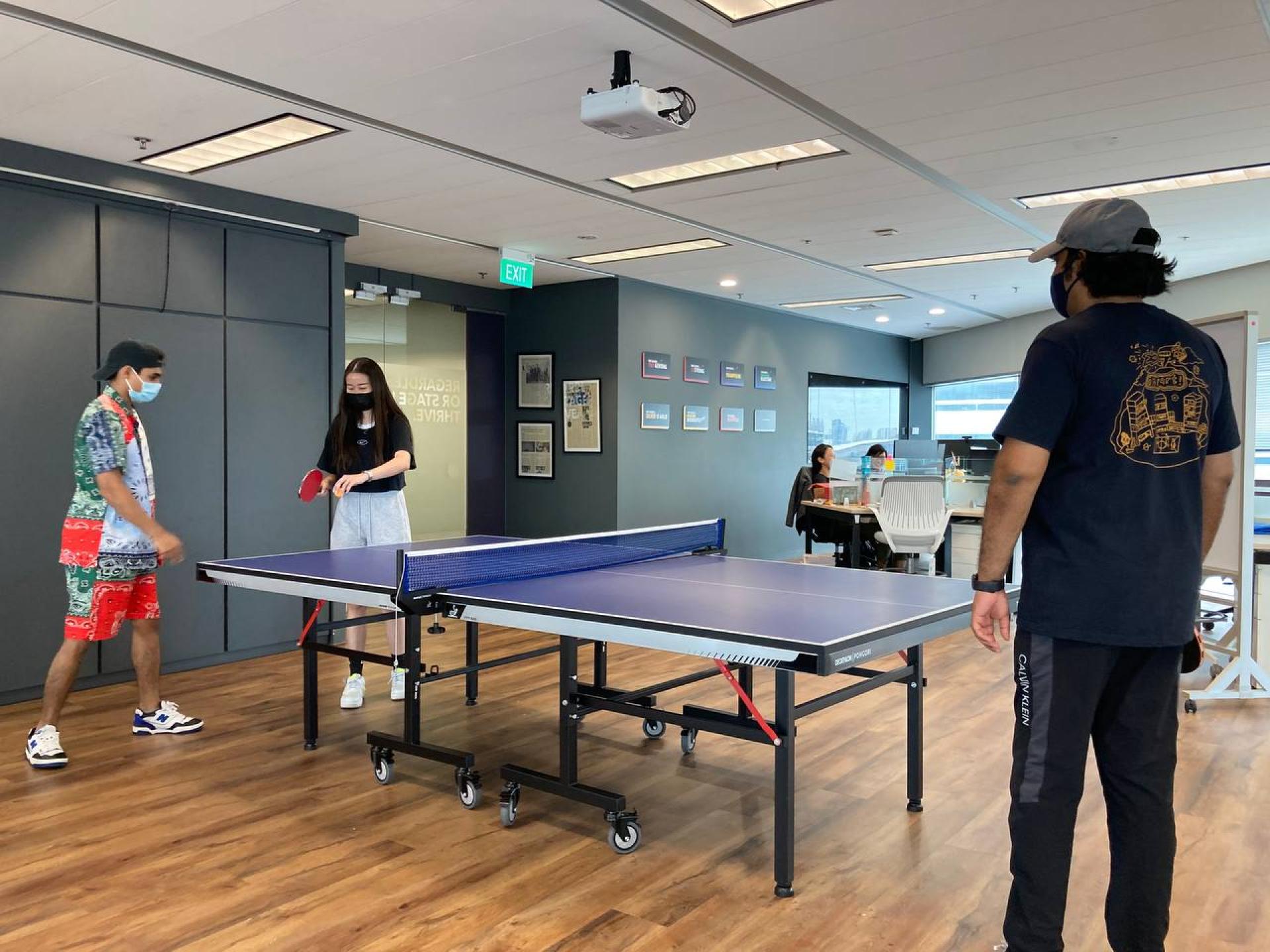
A friendly game of table tennis at Impart’s co-working space.
What does community mean to you and how can we create a better future for communities in Singapore?
That’s a wonderful question. Most enter the social sector with a desire to “give back”, and that’s how many noble efforts are framed. But we’ve grown to pivot from the language of “giving back” to the idea of “nurturing community”. Don’t get us wrong. “Giving back” is good. We just believe that we can do better.
“Giving back” helps people to recognise that they occupy a privileged position with the opportunity to assist. But it also leaves some troubling room for ambiguity. What is the recipient’s role in this benevolent act? Is the recipient a passive receptacle? A key stakeholder? An empowered collaborator? And what’s the giver’s identity in this relationship? A benefactor? Investor? Someone from the outside looking in?
Recognising this ambiguity helps us to shift to the language of “community”. In communities, we are interdependent. We are not merely benefactors and beneficiaries, but also collaborators. Your loss is my loss, and your gain is my gain. We don’t just get to drop in and help at our convenience before leaving for another world at our caprice. We’re here, and we’re here for the long haul. It takes time to adopt this paradigm in social service, perhaps owing in part to how volunteerism is introduced to us as an ad-hoc event in our formative schooling years. Thankfully, we’ve seen this idea resonate with more of our volunteers and partners over time, and we’re hopeful for further traction. We think it’s best actualised when people get the opportunity to build deep relationships with another—genuine connections are rather scarce these days. But we think that our model has a decent chance of making a change. And we definitely stand a greater chance if you come on board as well!
All images courtesy of Impart. Visit Impart.sg for more information on getting involved.
Article was first posted on SocialSpaceMag.org.